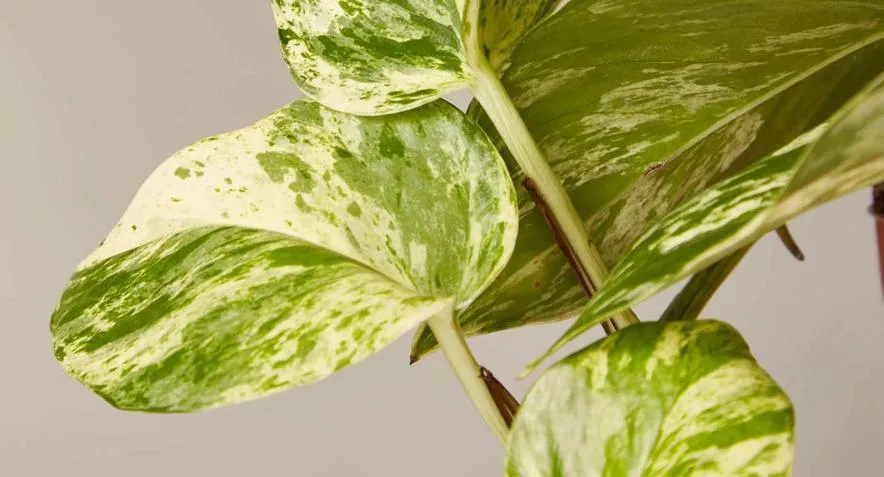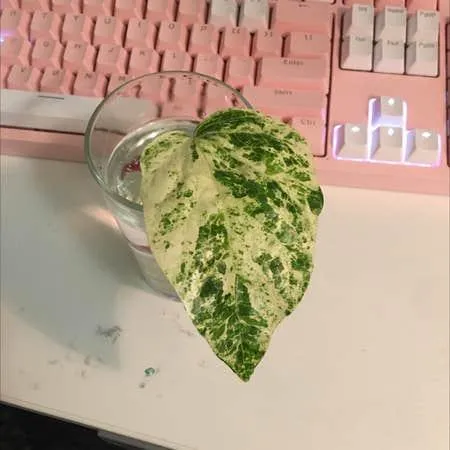A Complete Guide to Caring for Your Ivy Plants
If you’re wondering how to keep your ivy looking its best, you’ve come to the right place! This comprehensive guide covers all the basics of ivy care from planting to moisture to pruning. By the end, you’ll have the know-how to grow a gorgeous, healthy ivy.
Choosing the Right Variety
With over 300 species of ivy to pick from, the first step is selecting one suited to your climate and growing conditions. English ivy (Hedera helix) is among the hardiest and most commonly grown. It thrives in part shade but can take full sun in cooler zones. Boston ivy (Parthenocissus tricuspidata) is also very hardy, climbing walls and fences rapidly. Swedish ivy (Plectranthus verticillatus) is perfect for hot climates, with beautiful blue foliage that tolerates drought.
Consider where you want your ivy to grow—on the ground, climbing, or hanging—when choosing a variety. Groundcover ivies spread rapidly while climbers like Boston ivy attach themselves with suckers. Make sure to research your selection’s mature size too to avoid surprises!
The Best Spot for Your Ivy
Most ivies prefer bright, indirect light for at least half the day. Full sun can scorch some varieties’ leaves. When planting, choose a spot that gets morning sun but is shaded from harsh afternoon rays. Ivy also thrives in partial shade.
The soil is important too. Ivy prefers well-draining, nutrient-rich soil with good structure. Amend clay or sandy patches with compost beforehand. Avoid spots that collect water after rains.
Planting Your Ivy
Timing planting for early spring or fall allows ivy to establish roots without summer stress or winter freezing. Carefully remove your plant from its nursery pot. Tease apart any circling or tangled roots before placing it in a hole only slightly deeper than the existing root ball. Backfill with native soil, then water well.
If planting a climbing variety, use garden stakes or trellises for support as it grows. Be sure frames are securely in place before filling in soil around roots. Always water newly planted ivy regularly until established.

Moist but Well-draining Soil
Consistent moisture is key for lush ivy growth. The soil should never fully dry out but also shouldn’t get soggy. Assess moisture needs based on your variety and conditions. During heat waves, hanging baskets may need daily watering while other ivies can go several days. Always check soil moisture with your finger before watering.
Prune back any foliage blocking access to the soil surface, which can lead to dry patches. Also incorporate 2-4 inches of organic mulch like shredded bark around plants to retain moisture, discourage weeds, and keep roots cool.
Fertilizing Your Ivy
Nutrients are crucial come spring growth season. Use a balanced, water-soluble houseplant fertilizer diluted to half strength every 2-4 weeks during the growing season. Scrub foliage to remove any fertilizer residue that can burn leaves. Slow-release fertilizers are convenient but avoid over-fertilizing, which stresses ivies.
Compost or organic fertilizers supply steady, gentle nutrients. As leaves yellow in fall, withhold fertilizer to encourage dormancy. Resume in spring once new growth emerges.
Pruning and Training Ivy
Pruning helps shape your ivy plant and encourages new growth. In early spring, remove any damaged or diseased foliage. Lightly trim back leggy growth to densify. For climbing varieties, use shears to remove any shoots growing inward instead of up supports.
Train younger vines up trellises or walls, gently twisting stems in the desired direction. Mature, heavily bearing English ivies may need rejuvenating prunes in fall to reduce weight on structures. Always disinfect shears between plants to avoid spreading disease.
Common Pests and Diseases
Unfortunately, no plant is completely pest-proof. Learn to identify issues early. Spider mites leave stippling on leaves while scale insects appear as hard, gray bumps. Isolate affected areas and spot-treat with neem oil or insecticidal soap. Systemic granules in soil prevent recurrence.

Powdery mildew appears as a white, fuzzy coating. Improve air circulation and water early in the day to dry foliage rapidly. Remove heavily infected leaves. If preventing Ivy, minimizing stress helps plants naturally fight pathogens with vigor.
Overwintering Tender Varieties
Hardy ivies like English thrive outdoors year-round in many areas. More delicate types need protection. Gradually accustom container plants to shade before 35°F nights. Lift pots to store in an unheated garage or lightly insulate root balls outdoors with mulch. Cut back tops by half to reduce winter workload.
Window boxes come inside before first frost. Give minimal water and warmth (55-65°F) to induce dormancy. Ivy’s deep green makes an lovely accent all winter!
Dealing with Ivy’s Vigorous Growth
Left unchecked, ivy can overrun beds and invade other plants’ space. Contain groundcovers with edging or grow in isolated garden islands. For climbing vines, trim off excess shoots to control spread once upward growth exceeds 6-12 inches. Replant extras elsewhere!
Sometimes, creative uses for ivy’s strength are welcome—say, covering an unsightly chain link fence. Just be sure varieties match the scale of structures. With attentive care and respecting ivies’ natural habits, they’ll reward you with lush foliage for many years.
I hope these tips help you gain confidence in growing ivy! Don’t hesitate to experiment and see what works best in your microclimate. With so many beautiful cultivars awaiting discovery, there’s always more to learn. Happy planting!
Ivy Care Tips and Information
| Type of Ivy | Watering Needs | Sunlight Preference |
|---|---|---|
| English Ivy | Keep soil moist but not soggy. Water when top inch of soil is dry. | Part shade to full shade |
| Boston Ivy | Water thoroughly when top inch of soil is dry. Tolerates drought once established. | Full sun to part shade |
| Swedish Ivy | Keep soil slightly moist. Water less in winter when growth slows. | Part to full shade |
| Algerian Ivy | Water moderately. Allow soil to dry slightly between waterings. | Full sun to part shade |
| Needlepoint Ivy | Water moderately. Tolerates dry soil once established. | Full sun to part shade |
FAQ
-
How often should I water ivy?
Ivy plants like moisture but do not want soggy soil. Water when the top inch of soil feels dry, usually every 5 to 7 days. Check more often in hot weather since the plant may need water more regularly when it’s really warm out.

-
What kind of sunlight does ivy need?
Most types of ivy grow great in medium to low light. They can tolerate quite a bit of shade. Direct sun is okay for some ivies in the morning or evening, but too much strong light may burn the leaves. So indirect or dappled sunlight works best in most cases. Nevertheless, ivy still needs some light to photosynthesize and grow well.
-
How do I know if my ivy is getting too much or too little water?
If the soil is saturated and the leaves start to look droopy or brown edges form, that’s a sign of too much water. The plant may even lose some leaves. On the flip side, if the soil becomes bone dry and leaves shrivel up and fall off, it’s not getting enough H2O. Checking the soil before watering again is key to finding the happy medium.
-
What kind of fertilizer does ivy need?
During the growing season from spring to fall, use a balanced houseplant fertilizer every few months. Dilute it to half or quarter strength according to the package instructions. Too much fertilizer can burn the roots. Experts suggest staying on the lighter side of the recommended dosage. You want to feed the plant, not overfeed it! Strong guys like ivy don’t need a huge helping of nutrients.
-
Should I repot my ivy plant?
Usually ivy is fine staying in the same pot for a year or more if the soil is good. But if the roots start to grow out the drainage holes, it’s a sign the plant has outgrown its space. Repotting into a container with 2-4 inches more diameter room gives the roots area to spread out. Go for an ideal fit – not too big but not too cramped either.
However, repotting is not always necessary. As long as the plant seems happy where it’s at, there’s no need to mess with it! Over-potting can cause issues too.
-
My ivy looks leggy. How can I make it bushier?
When ivy stretches tall looking for sun, it becomes leggy. One way to get more fullness is by pruning it back somewhat. Cut stems back to where you see nodes from which new growth will sprout. You can also try moving it to a spot with slightly more light. Pinching off the newest growth tips promotes branching. With regular shaping, an ivy plant can fill out nicely over time becoming less straggly.
In the end, observing your individual ivy and listening to its needs is key. Plants have personalities too! If the leaves are green and it’s putting out new growth, it’s easy to see the plant is content. But if Wilma the Ivy suddenly starts acting peculiar, maybe ask an expert at the garden store for tips. Trying different watering or lighting tweaks may be worth a shot before calling it quits on a cranky plant. With basic care tailored to the plant’s preferences, ivy can add lovely greenery indoors for basically forever!

